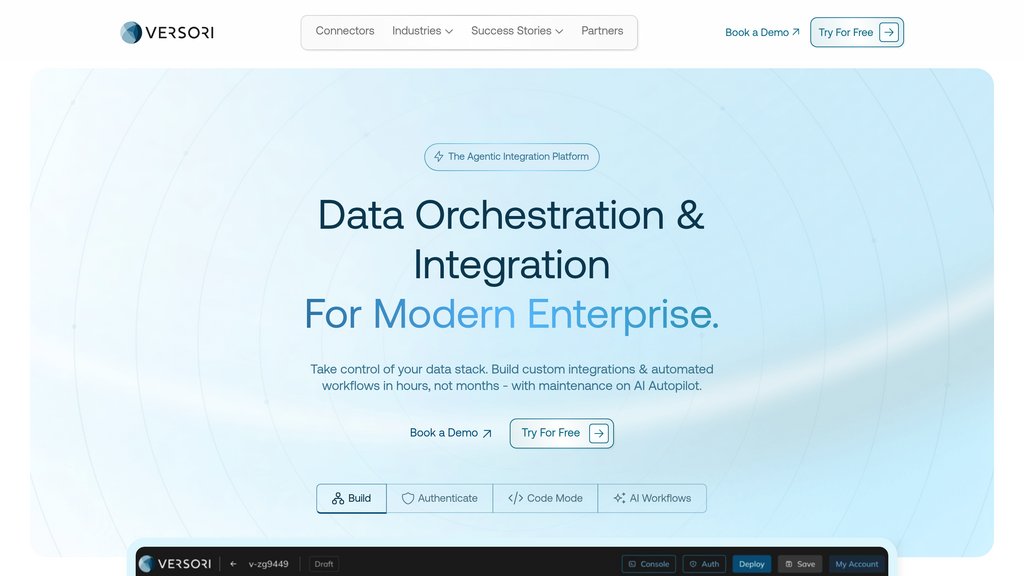Versori
Low-code integration platform for building custom workflows across systems
Introduction
What is Versori?
Versori enables organizations to create tailored integrations and automate business processes in days instead of months. The platform utilizes artificial intelligence to analyze API documentation and automatically generate integration logic, managing sophisticated data mappings and authentication methods with ease. It accommodates both low-code and full-code development styles, featuring a visual workflow designer alongside direct code access for technical teams. Versori also provides built-in connector libraries for SaaS applications, AI-powered assistants linked to operational APIs, and ongoing monitoring to ensure integration reliability. The infrastructure guarantees secure, scalable deployments with enterprise-level security and comprehensive logging.
Key Features
AI-Powered Integration Development
Automatically processes API documentation to establish endpoints, logic, and field mappings, significantly speeding up integration creation.
Flexible Development Options
Supports visual drag-and-drop workflow construction alongside direct code modification, accommodating users with different technical backgrounds.
Advanced Authentication Support
Manages various authentication methods including OAuth 1.0, OAuth 2.0, API keys, tokens, and custom authentication protocols seamlessly.
Pre-Built Connector Libraries
Allows SaaS platforms to incorporate native, instant integrations for their customers, accelerating implementation and deployment processes.
Intelligent Data Transformation
Employs AI to create complex data mappings and conversions rapidly, minimizing manual setup requirements.
Proactive Monitoring and Support
Tracks API documentation updates and integration performance to avoid service interruptions and maintain system stability.
Use Cases
Enterprise Process Automation: Develop and implement custom workflows that link various enterprise systems for optimized operations.
SaaS Platform Integration: Integrate native connection capabilities within software platforms to provide users with smooth third-party connectivity.
Sophisticated Data Handling: Automate complex data transformations and field mappings between different APIs and data sources.
AI-Enabled Assistants: Build intelligent assistants that execute tasks by communicating with internal systems through functional APIs.
Legacy System Integration: Create custom connections for specialized or older systems that conventional integration platforms cannot support.
